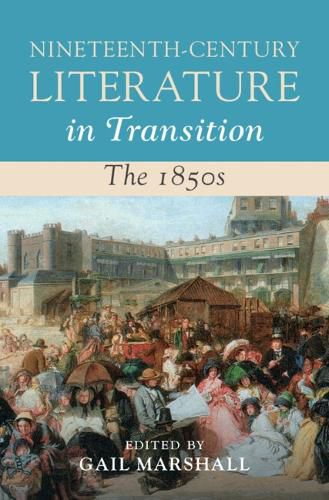Readings Newsletter
Become a Readings Member to make your shopping experience even easier.
Sign in or sign up for free!
You’re not far away from qualifying for FREE standard shipping within Australia
You’ve qualified for FREE standard shipping within Australia
The cart is loading…






Establishing a fresh critical paradigm, this volume shows how the 1850s was significantly defined by forms of increasing intellectual, class, and geographical mobility. It saw the flourishing of major Victorian writers, including George Eliot, Elizabeth Gaskell, Charles Dickens, W. M. Thackeray, Matthew Arnold, Charles Kingsley, Anthony Trollope, Tennyson, and Elizabeth Barrett and Robert Browning. Outputs by these writers were read alongside a variety of other genres, including travel writings, learned society reports, statistical returns, popular journalism, working-class writing, and scientific papers in a period which saw an increasing availability of cheap printed matter. Intertextuality and interdisciplinarity are not only key to this volume, but are also one of the most important legacies of the literature of the 1850s. Contributors are attentive to a plethora of voices, disciplines, and forms of knowledge which they read through rigorous 21st-century critical priorities including diversity, cultural and physical geography, and the environment.
$9.00 standard shipping within Australia
FREE standard shipping within Australia for orders over $100.00
Express & International shipping calculated at checkout
Establishing a fresh critical paradigm, this volume shows how the 1850s was significantly defined by forms of increasing intellectual, class, and geographical mobility. It saw the flourishing of major Victorian writers, including George Eliot, Elizabeth Gaskell, Charles Dickens, W. M. Thackeray, Matthew Arnold, Charles Kingsley, Anthony Trollope, Tennyson, and Elizabeth Barrett and Robert Browning. Outputs by these writers were read alongside a variety of other genres, including travel writings, learned society reports, statistical returns, popular journalism, working-class writing, and scientific papers in a period which saw an increasing availability of cheap printed matter. Intertextuality and interdisciplinarity are not only key to this volume, but are also one of the most important legacies of the literature of the 1850s. Contributors are attentive to a plethora of voices, disciplines, and forms of knowledge which they read through rigorous 21st-century critical priorities including diversity, cultural and physical geography, and the environment.